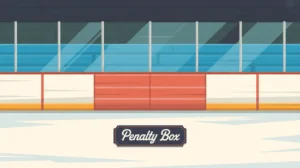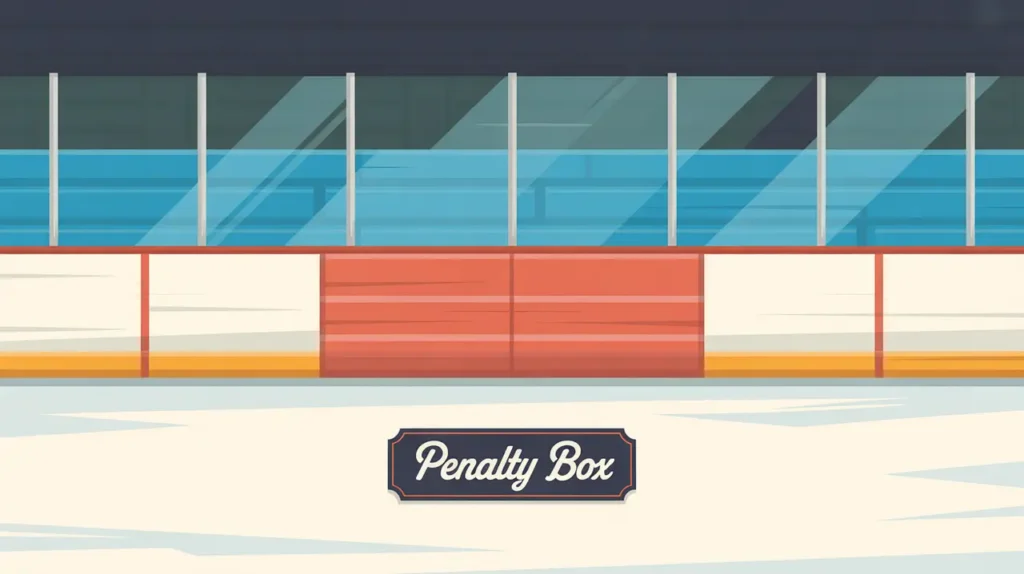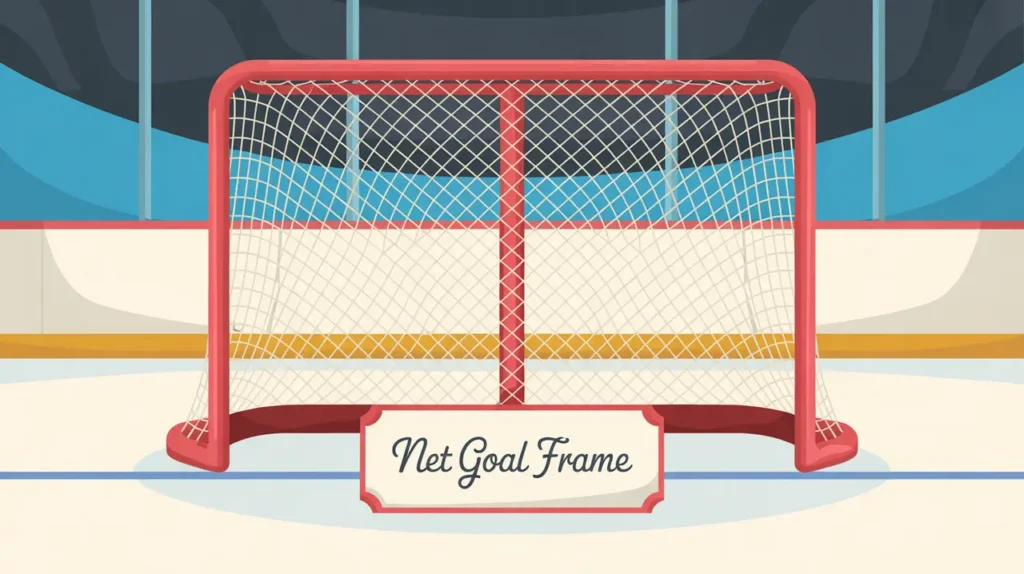Jim’s Intro to the Glass
Hi folks, Jim here, the only commentator who once slammed his headset into the glass by mistake while trying to wave at the camera.
What is the glass?
The glass is the clear wall extension that sits on top of the boards, wrapping around the entire rink. It’s usually made of Plexiglas or tempered safety glass, standing between 5 and 8 feet tall depending on the rink. Its job is to keep the puck in play, protect spectators, and maintain the game’s flow without turning the rink into a sealed box. It’s see-through, but it’s anything but invisible to the way hockey is played.
How does it work?
The glass shapes the game by containing pucks, guiding bounces, and enabling physical play.
- Containment: It prevents pucks from flying into the stands on high shots, deflections, or rim-arounds.
- Banking and Clearing: Players often use the glass to chip the puck out of the zone on clears, using it like an angled wall.
- Rim-arounds: Dump-ins along the boards and glass can travel all the way around the zone, giving forecheckers a chance to pressure.
- Spectator Protection: The glass absorbs impact from pucks and players, keeping fans safe while maintaining clear sightlines.
- Physical Play: Players get checked into the glass frequently, and modern materials are built to flex slightly on impact to reduce injuries.
The glass isn’t just for safety. It’s part of the rink’s tactical landscape.
How do you make good decisions with it?
Good glass play relies on technique, angles, and timing.
- Zone Clears: Chip the puck high and off the glass to relieve pressure without icing.
- Angle Awareness: Different rinks have different glass “personalities.” Some give clean, predictable bounces. Others send pucks on wild rides. Learn the local quirks.
- Rim Speed: Dump the puck with the right force so it travels the glass cleanly, not stopping behind the net or dying in the corner.
- Heads Up: Never blindly chip the puck off the glass; read the pressure first.
- Watch for Weird Bounces: Dead spots or stanchions can cause sudden deflections, so keep sticks and bodies ready.
How do you master it?
Mastering the glass takes repetition and rink awareness. Defensemen, in particular, learn how to use the glass for clean exits under pressure. Forwards study how rimmed pucks behave in different arenas so they can anticipate retrievals. Over time, players develop instincts for how to use the glass as both a shield and a tool.
What does it look like when done right?
Smooth clears glide off the glass and out of the zone without icing. Dump-ins take clean rides around the boards. Players check into the glass with control, and rebounds behave predictably because the team knows the rink’s tendencies. It looks like the glass is working with the players, not against them.
Commentator’s Corner
Jim’s Take
I’ve seen more unexpected scoring chances come from weird glass bounces than from bad line changes. If you don’t know your rink’s glass, it’ll surprise you.
Parent Tip
Help young players learn to use the glass for clears instead of just firing the puck wildly. It builds confidence under pressure.
Player Tip
Pay attention during warmups. Watch how the puck reacts when it hits the glass in different spots. Those little details can turn a panicked clear into a smart play.
A Final Thought
The glass may look like a silent backdrop, but it’s an active part of the game. Learn its angles, quirks, and rhythm, and it becomes a trusted ally in every zone.









